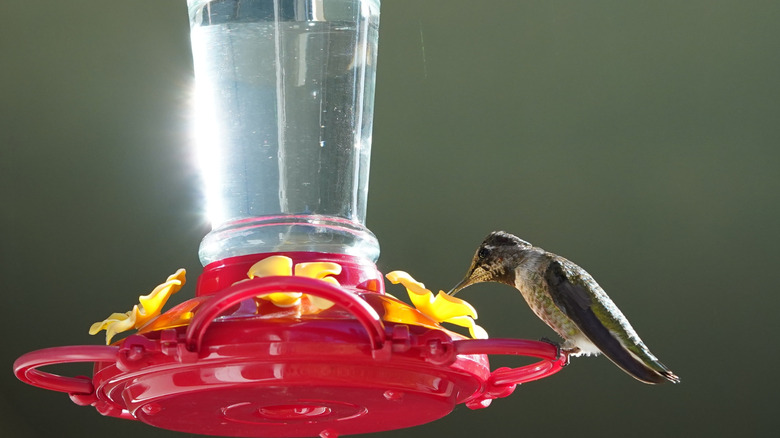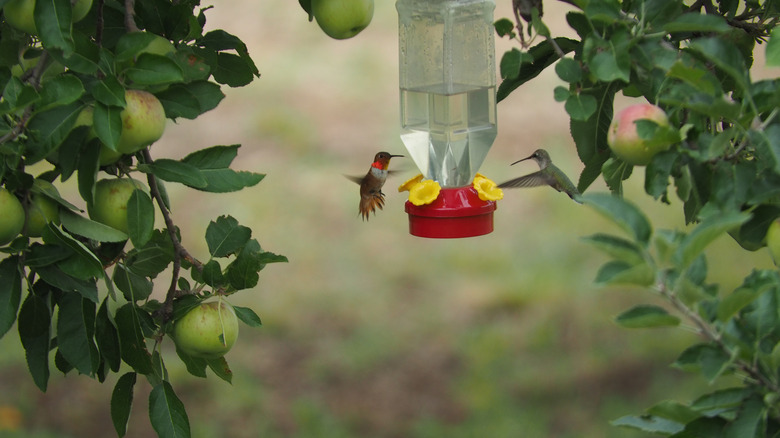Why People Put Foam Wrap Around Their Hummingbird Feeders (And Should You?)
If you've had a hummingbird feeder for some time, you likely know the essential features for attracting hummingbirds to your garden can go beyond providing them with nectar. You may have seen tricks other people try to use around their own feeders, as well. This can include ways to protect hummingbirds throughout temperature fluctuations. One method you might have seen or read about involves wrapping foam around hummingbird feeders to keep their food cool, but there are other alternatives to this method that are likely more effective.
When temperatures in your area skyrocket, it's understandable to be concerned about your hummingbird friends. Nectar can quickly heat up in their feeder, especially if it's exposed to direct sunlight. Subsequently, this can cause the sugar in the nectar to ferment and spoil, making an otherwise healthy source of food for hummingbirds a dangerous one. This is why some people might use insulated foam around their bird feeders. It's thought that the foam can help keep the nectar inside a feeder from heating up so quickly, thereby leading to less spoilage. The practice is similar to using an insulated foam holder for a can of soda or pop. While the practice may sound like a good idea in theory, it will only keep the nectar cool for so long. You should be concerned if the nectar in your hummingbird feeder looks cloudy or if you see any signs of mold, as these can lead to deadly bacterial of fungal infections in the poor birds. In such cases, toss the nectar and clean the feeder immediately.
Skip the foam wraps and use other tried-and-true cooling methods for hummingbird feeders instead
One longer-term solution to keeping your hummingbird feeder cool involves relocating it to a shady spot, if available. Ideally, this should be in a location in your yard or garden that is in the shade during the afternoon hours when temperatures are typically the hottest. Placing the feeder near the shade of a tree has the added bonus of offering hummingbirds a place to perch or escape from predators relatively quickly. With that said, it's also important to keep other location rules in mind so that you don't make the mistake of putting your hummingbird feeder in the wrong spot.
Another idea involves the amount of nectar you place in the feeder. If you normally fill hummingbird feeders to the top, there's a good chance that some of the nectar may spoil in hot weather before the birds have finished it all. To that end, you might consider putting less nectar in the feeders at one time and fill them every day that local temperatures exceed 90 degrees. While this might take more work in the short-term, it will mean less spoilage and unhealthy hummingbirds in the long run. Also, if you're worried about wasting nectar, keep in mind that you can refrigerate a batch of fresh homemade nectar for 7 to 10 days — just make sure you allow the product to warm up to room temperature before refilling any feeders.

